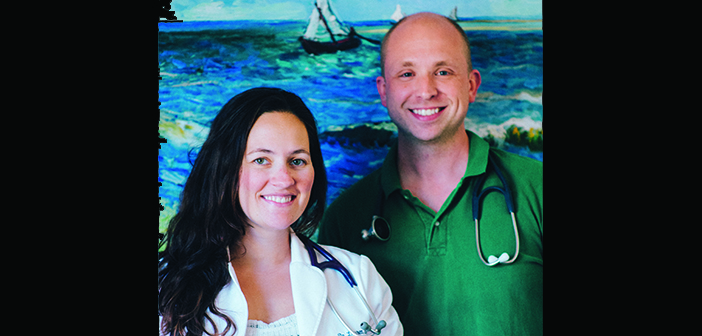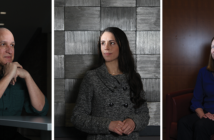Is direct primary care the remedy to physician burnout?
Hour-long office visits with your primary care provider. The ability to email or text your doctor 24/7. The occasional house call. They’re the hallmarks of service at Direct Doctors, a North Kingstown, RI, family medicine practice co-owned by Lauren Hedde, DO RES’14 and Mark Turshen, MD RES’15.
Direct Doctors is the only micropractice in the state that doesn’t accept insurance. “Because we cut that whole thing out, we can see a lot fewer patients and spend much more time with each one,” Hedde says. Taking insurance means more staff; “In order to pay for this extra staff you have to see more patients, and in order to see more patients you need more support staff. There’s a snowball effect,” she says.
Hedde and Turshen are the only staff at Direct Doctors, which operates on a subscription model: an affordable monthly fee set according to the age of the patient. Overhead is low: when you enter the waiting room, no receptionist checks you in. A sign directs patients to ring a bell and their own physician greets them.
The pair, who met as family medicine residents at Memorial Hospital of Rhode Island, wanted to practice direct primary care to focus their time and energies on caring for patients, rather than filling out checklists to satisfy insurance requirements. And, as occasional patients themselves, they understood that many patients find their interactions with providers unsatisfying.
“It takes a long time to get an appointment, and then you sit in the waiting room for an hour to see the doctor for 10 minutes, and the whole time they are typing on their computer so they can get ahead of their charting. It doesn’t feel very personal,” Turshen says. “When we were residents, it felt like we were doing a lot of things to help the insurance and the billing, rather than the patient. That didn’t make sense.”
Hedde started the practice in August 2014 and says she broke even by about four months. But “break even” doesn’t necessarily equate to the six-figure salaries offered to doctors right out of residency. Hedde and Turshen each have between 400 and 500 patients, compared to perhaps 2,000 patients per primary care doctor in a typical practice. They could take more patients and earn as much as their conventional counterparts, Turshen says—“or you can make less, but you work the way you want to.”
Instead they place a high value on having flexibility and control of their schedules. “Both of us have three children; my youngest is 6 months,” Hedde says. “We want to be with our families, and we can schedule around that.” And patients don’t take advantage of the access. “We have rarely been called in the middle of the night, and when we have, it’s been warranted,” she says.
They say their model enables better medicine because they can spend more time with their patients. Turshen describes one patient who came to the practice with type 1 diabetes that had not been well controlled for 11 years. After nine months, the patient’s blood glucose levels were in a healthy range. They also say their increased availability has saved patients money, like keeping a patient out of the emergency room, or helping another patient with a rare disease get a timely diagnosis instead of bouncing from one specialist to another.
Hedde says their approach isn’t for everyone: “You have to like running a business and you have to accept business risk.” But she says physicians frustrated by overbooked schedules and insurance demands might consider it as an alternative to quitting their profession.
“Doctors are burning out because they aren’t getting those rewarding moments that keep us invested and enjoying what we are doing,” she says. The Direct Doctors model might just be the antidote.




